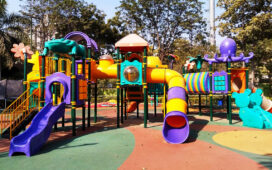
Small business owners spend countless hours developing a site that will wow visitors, and spending time focusing on SEO is certainly important. However, it is not just enough to lure shoppers to an e-commerce site. The point, after all, is to make the sale.
Where SEO draws in potential buyers, Conversion Rate Optimization (or CRO) turns that potential into reality. A smart website administrator will use CRO to uncover small mistakes that stop people from taking action. For instance, a flaw in layout or execution, such as a broken link or poorly placed “buy now” button, could literally prevent a purchase from occurring. Or perhaps a design choice, such as a color scheme or button font, can affect a visitor’s thought process, whether consciously or subconsciously, and interrupt the buying process.
Focusing on CRO can help website owners turn visitors into buyers and be a factor in the success and failure of any well-executed e-commerce site. If you’ve discovered that SEO wasn’t enough, consider the following advice on conversion optimization to help get more out of your current traffic.
When To Use CRO
It’s important to know when to use CRO. While many websites profit from conversion optimization, not all of them do. New sites, for instance, should focus on drawing in traffic and creating valuable content.
Sites without high traffic volumes are unlikely to benefit from the sometimes minute changes of CRO. In established sites, however, proper optimization can translate into a great deal of recurring monthly revenue. The leverage that results from thousands of visitors is likely to impact the bottom line for established sites, whereas new site owners may only feel frustrated in what feels like wasted effort.
Front End and Back End
There are two sides to every web site. The part is seen by the consumer, known as the front end, and the portion that is behind the scenes, which includes HTML, meta tags, and image descriptions, and so on. When creating an e-commerce site, you must focus on both sides of the site to ensure customer satisfaction and overall site success.
This article includes X tips and is divided into the following sections, which are linked for ease of use.
Front end
- Unique content
- Images
- Navigation
- Related products
- Partners, brands, & affiliates
- Search bar
- Shipping
Back end
- Google guideline
- Optimized URLs
- Anchor text
- Remove broken links
- Optimize images
Front end
#1 Unique content
It cannot be emphasized enough: unique content is essential to a successful website. Not only will it help you achieve high search engine results, but it will also make your customers happy. If your content is exactly like your competitors’ information or you have a high amount of duplicate descriptions on your products, customers could see you as a spammy site.
#2 Images
Ecommerce sites inherently rely on high-quality images of products. Customers want to see an item prior to committing to purchase it. Brick and mortar stores have the advantage of allowing buyers the ability to hold a product, so e-commerce sites must provide an experience that rivals that. Subpar product photos may sway customers into believing that the product itself is inferior. If necessary, pay for a professional photographer to capture images that truly reflect the quality of your product line.
#3 Navigation
We live in a data-driven world, and the advent of the Internet and mobile technologies have made us accustomed to having whatever we want at our fingertips in the blink of an eye. Online shoppers expect to be able to find what they are looking for easily and with as little searching as possible.
Poor navigation is one of the main factors that contribute to a high bounce rate. Don’t try anything too fancy or out of the ordinary, as it may be a turnoff to potential buyers. Instead, ensure that your navigation bar is constantly visible at the top of the page or on the left-hand side.
#4 Related products
One advantage that e-commerce sites have over brick and mortar stores is the ability to recommend related products to customers. Related products can be offered based off of prior purchases or on a user’s search history.
This strategy provides potential buyers with a customized user experience by adapting your store to their preferences and needs. Also, just as local storefronts take advantage of impulse buying, e-commerce sites can instigate impulsive purchases through the recommendation of related products.
#5 Partners, brands, & affiliates
Brand name products regularly draw on the celebrity status of sports stars and actors by utilizing them in commercials and other advertisements. While you may not have the ability to commission Lebron James, Alec Baldwin, or Brad Paisley for your e-commerce site, you can take advantage of your well-known partners, brands, and affiliates.
The practice of name-dropping draws on the credibility of other successful organizations. Choose well-known partners or brands which may have been featured in publications or are popular with your client base. This can be an effective method of building trust with new and potential customers.
#6 Search bar
One of the most frustrating problems on an e-commerce site is when the search bar is not immediately visible. Your navigation bar may be accessible and your categories could be simple to navigate, but if visitors cannot enter the name of their product into a search area, you could lose customers.
If an individual is actively searching for a product on your site, they are likely to purchase it – from you or from a competitor. However, if that potential buyers cannot find or access a search bar, you are missing out an easy sell.
#7 Shipping
The leading reason that people abandon their purchase when it comes time to checkout is shipping charges. Many e-commerce sites combat this problem with free shipping on certain items or on a specific price range or amount. If you choose to offer free shipping or reduced shipping rates to your clients, be sure to clearly advertise it, particularly if a specific code is required to access the discount. Don’t lose customers because they were not aware of your shipping specials.
Back End
#8 Google Guidelines
Google changes its algorithm regularly, so it’s important to keep up to date with these changes or pay someone else to check your site against Google’s guidelines. The most relevant factor in Google rankings is the novelty of content. For an e-commerce site, these means don’t copy the manufacturer’s product descriptions verbatim, but instead, write your own unique descriptions. Google penalizes sites that offer repetitive content within its own pages or from another URL.
#9 Optimized URLs
It is especially important for e-commerce websites to optimize product URLs since these sites typically sort products by price, style, or other categories. The same product can be discovered by the customer through different URLs, so the link and URL structures should be SEO friendly. Too often, a product URL refers back to a product ID, rather than a concise description of the product itself. Additionally, putting those product pages in category folders (such as “women” or “casual” or “shirts”) makes search engines think those words are more important than the product itself. So your product URL could look like this:
http://yoursite.com/category/women/shirts/product.id=787452002ZFQ5
Or it could let both humans and search engines know what’s most important by being optimized like this:
http://yoursite.com/fitted-v-neck-tee-shirt-for-women
#10 Anchor Text
As mentioned, potential customers can arrive at a product page from a variety of other pages, from landing pages to categories to sales pages. However, it is important that the anchor text that is linked includes keywords used for ranking rather than generic “click here” or “product page” text. Being specific with the anchor link will help optimize the site and the product page.
#11 Remove Broken Links
One of the quickest ways to lose site visitors is if they click on a link and get a 404 error or “page not found” message instead of the product page. Broken links occur when a page has been removed or moved and the URL wasn’t updated to match. Since e-commerce sites typically have numerous products and a variety of ways to reach each and every product, they are prone to have broken links, simply because of the sheer quantity of links. Take the time to go through and click every link to ensure that they are functional, properly connected, and clean.
#12 Optimize Images
Every image on your site offers another opportunity to boost search engine rankings and add SEO value. Optimize the ALT tags for the images by making each one different, and then add relevant keywords for every photo.
Final Thoughts
Follow these tips and suggestions to help your e-commerce site achieve higher traffic and conversions, but remember that these are just a starting point. To truly be successful, you must consistently work on your site, optimizing your content and design not only for better rankings but also for happier customers.










